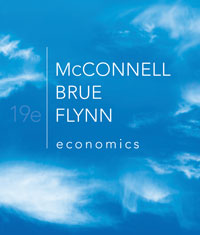Economics (McConnell) AP Edition, 19th EditionWeb Chapter 39:
The Economics of Developing CountriesOrigin of the Idea <a onClick="window.open('/olcweb/cgi/pluginpop.cgi?it=gif::::/sites/dl/free/0217511447/124310/origins_image.gif','popWin', 'width=70,height=90,resizable,scrollbars');" href="#"><img valign="absmiddle" height="16" width="16" border="0" src="/olcweb/styles/shared/linkicons/image.gif"> (1.0K)</a> <a onClick="window.open('/olcweb/cgi/pluginpop.cgi?it=gif::::/sites/dl/free/0217511447/124310/origins_image.gif','popWin', 'width=70,height=90,resizable,scrollbars');" href="#"><img valign="absmiddle" height="16" width="16" border="0" src="/olcweb/styles/shared/linkicons/image.gif"> (1.0K)</a> | 39W.1 Economic Development |
Schumpeter and Solow developed more general theories of economic growth. Other economists focused specifically on economic growth in developing nations. Among them was Ragnar Nurske (1907-1959), an Estonian who argued that poor nations remained poor because of a "vicious circle of poverty." Two others were Arthus Lewis (1915-1991) and Theodore Schultz (1902-1998), who shared the Nobel Prize in economics in 1979. Lewis developed the two-sector model, which divided the economy into a rural subsistence sector and an urban industrial sector. Lewis argued that surplus labor from the rural sector could be moved to the urban sector to fuel the development of industry and economic growth. Schultz focused on investment in human capital (the acquisition of skills and knowledge, or improvements in health, for example) as a means for poorer nations to develop and grow.
 | 
















